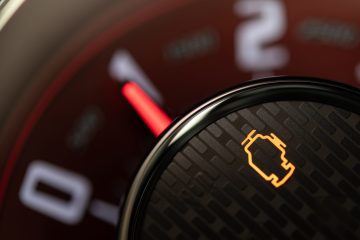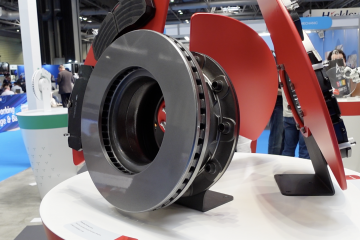High-quality brake fluid is crucial in ensuring that the brakes can function properly. With this in mind, the experts at ZF Aftermarket recommend workshops regularly remind their customers to drop in and have their brake fluid changed. Always check with the VM, but regardless of how many miles the vehicle has run it’s wise to change the fluid every year.
“Brake fluid plays an important role in ensuring that the brake system runs smoothly and therefore in maintaining driving safety,” explains Brian Newell Technical Field Sales Manager, ZF Aftermarket. “As the consistency of the brake fluid changes over time, the fluid must be changed regularly to prevent deterioration in brake force, or in the worst case scenario, brake failure.”
ZF Aftermarket offers helpful tips on how to check the condition of the brake fluid quickly and reliably.
Severe overheating can lead to brake failure
The brake fluid reservoir is normally located under the hood, on the driver’s side of the vehicle, against the back of the engine compartment or near the base of the windshield. The brake fluid flows into tubes which connect the brake pedal with the pistons of the disc brake or the foundation brake cylinders of the drum brake. When you apply your foot to the brake pedal, brake fluid transfers this force into pressure to the front and rear brakes and stops the vehicle. It works because liquids are incompressible. A brake booster further supports this process.
Various influences can greatly affect the condition of the liquid over time. Severe overheating, which can happen if the brakes are overused on a hill, for example, can raise the boiling point of the liquid. This is called an evaporative reaction and in turn can lead to the formation of bubbles. When the pedal is pressed again, the air bubbles are compressed, but hardly any force – if any – is transmitted. The lack of power transmission ultimately leads to a brake failure.
Over a period of time, brake fluid can absorb water through small gaps in the joints of pipes and hoses and this can seriously affect the way in which it performs. The weak point is often the ventilation hole in the cover of the tank, which provides necessary ‘atmospheric’ ventilation to deal with fluctuating brake fluid levels. However, atmospheric humidity can also enter in this ventilation hole. In addition, water can make its way into the overrun tank when the engine or the vehicle is cleaned. The brake hoses and sealing elements can also be responsible for increased water content in the brake fluid, as water can diffuse through them.
Venting device for a reliable repair result
On average, brake fluids have a water content level of around 0.05 per cent, which increases year on year. When the 3 per cent mark is exceeded, the boiling point of the fluid drops from between 205 and 260°C, the dry boiling point to between 140 and 180°C, the wet boiling point. If the water content exceeds 3.5 per cent, it’s vital the fluid is changed as the wet boiling point has been breached, and the brake fluid could now “boil” under braking causing untold danger.
ZF Aftermarket offers a broad portfolio of TRW brake fluids which covers most vehicle types. TRW brake fluids ensure perfect braking behavior from -50°C to +50°C, offer optimal protection against corrosion and react quickly to the system sensors installed in the latest brake systems, such as ESP.




You must be logged in to post a comment.